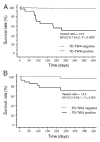Impact of sleep on arrhythmogenesis
- PMID: 19808502
- PMCID: PMC2744995
- DOI: 10.1161/CIRCEP.109.867028
Impact of sleep on arrhythmogenesis
Conflict of interest statement
Dr. Richard L. Verrier is co-inventor of a patent for T-wave alternans measurement by the Modified Moving Average method, which was assigned to Beth Israel Deaconess Medical Center and licensed to GE Healthcare. He has received research equipment and honoraria from GE Healthcare and grant support from Medtronic, Inc.
Dr. Mark E. Josephson declares no conflicts of interest related to this subject.
Figures










References
-
- Verrier RL, Mittleman MA. Sleep-related cardiac risk. In: Kryger MH, Roth T, Dement WC, editors. Principles and Practice of Sleep Medicine. 4. Philadelphia: WB Saunders; 2005. pp. 1161–1170.
-
- Lavery CE, Mittleman MA, Cohen MC, Muller JE, Verrier RL. Nonuniform nighttime distribution of acute cardiac events: A possible effect of sleep states. Circulation. 1997;5:3321–3327. - PubMed
-
- Yamashita T, Murakawa Y, Hayami N, Sezaki K, Inoue M, Fukui E, Omata M. Relation between aging and circadian variation of paroxysmal atrial fibrillation. Am J Cardiol. 1998;82:1364–1367. - PubMed
-
- National Center for Health Statistics: Deaths: Final data for 2001. National Vital Statistics Report. 2003. p. 52. Available at http://www.cdc.gov/nchs/data/nvsr/nvsr52/nvsr52_03.pdf. - PubMed
-
- Bradley TD, Floras JS. Obstructive sleep apnoea and its cardiovascular consequences. Lancet. 2009;373:82–93. - PubMed
Publication types
MeSH terms
Grants and funding
LinkOut - more resources
Full Text Sources
Medical

